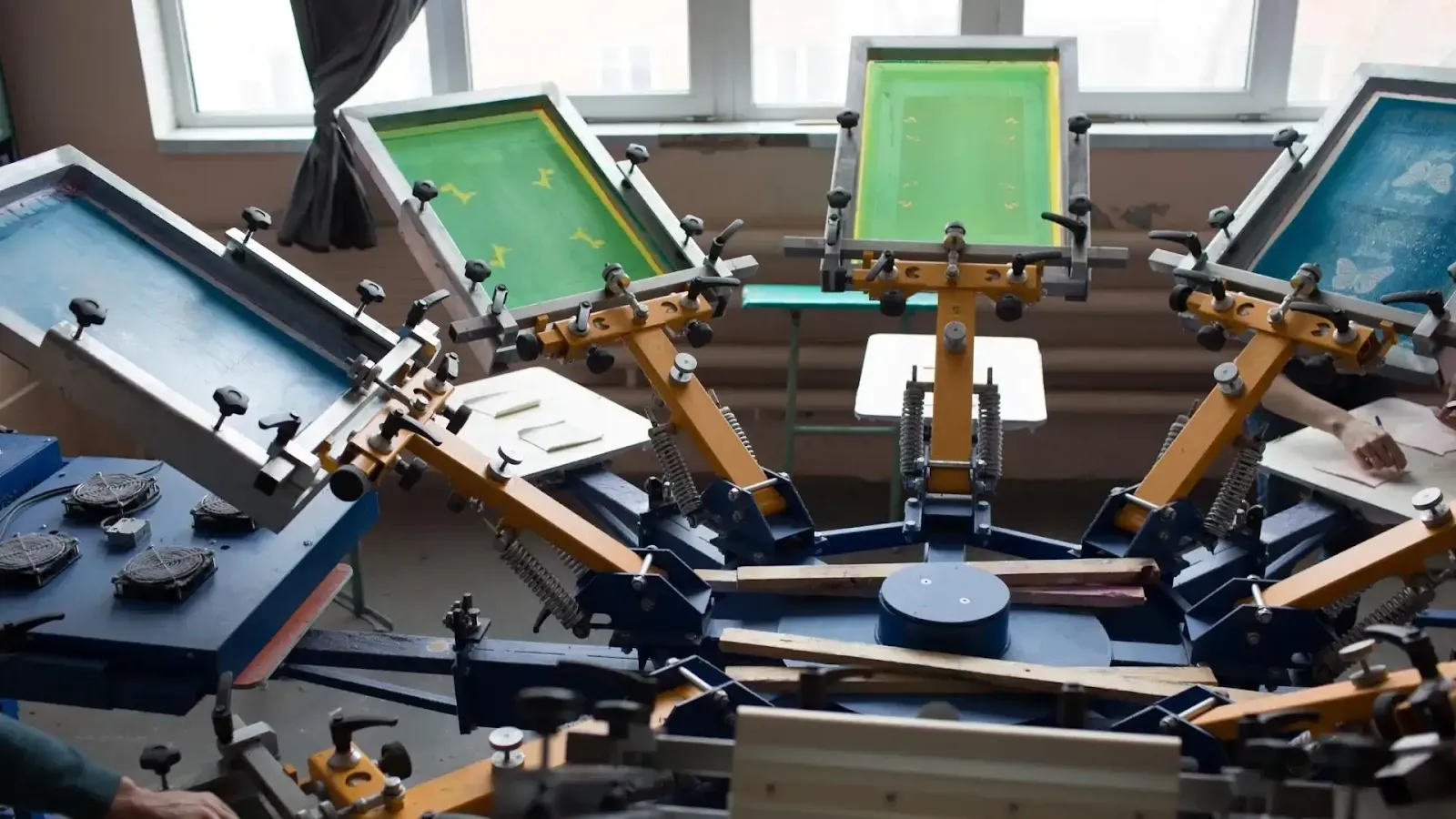Screen Printing
Screen Printing
Screen printing, also known as silk screen printing or serigraphy, is a popular and versatile printing technique used to transfer images, designs, and patterns onto various surfaces, such as fabric, paper, glass, plastic, and more. It's commonly used for creating art prints, posters, clothing designs, signage, and promotional materials.
Here's how the screen printing process typically works:
- Design Preparation: A design is created or prepared digitally or by hand. The design is then broken down into individual colors, each requiring a separate screen.
- Screen Preparation: A screen is essentially a fine mesh stretched over a frame. The mesh is typically made of silk or polyester. To prepare the screen, a light-sensitive emulsion is applied evenly onto the mesh. The emulsion is sensitive to light, so the screen is then dried in a dark environment.
- Exposing the Screen: A film with the design's image on it is placed on the dried emulsion-coated screen. The screen is exposed to UV light. The light hardens the emulsion except where the design on the film blocks it. This process creates a stencil on the screen.
- Rinsing and Drying: After exposure, the screen is rinsed with water. The areas of emulsion that were not exposed to light wash away, revealing the open mesh areas of the screen. The screen is then dried.
- Printing Setup: The screen is mounted onto a printing press. The printing surface (e.g., fabric, paper) is placed beneath the screen, and the screen is lowered onto it.
- Ink Application: Ink is placed onto the top edge of the screen. A squeegee is then pulled across the screen, pressing the ink through the mesh and onto the printing surface below. The ink passes through the open areas of the stencil, transferring the design onto the material.
- Drying or Curing: After printing, the printed material is usually passed through a drying or curing process. This can involve heat curing or exposure to UV light, depending on the type of ink used. This step ensures that the ink properly adheres to the material and becomes permanent.
- Repeat for Each Color: If the design involves multiple colors, each color is printed using a separate screen. The screens must be accurately aligned to ensure that all colors are properly registered with each other.
Screen printing offers several advantages, such as the ability to print on a wide range of materials, vibrant and opaque colors, and durability. However, it can be labor-intensive for multi-color designs and requires a certain level of expertise to achieve consistent and high-quality results.
In recent years, digital printing methods have gained popularity due to their speed and flexibility, but screen printing remains a preferred choice for many applications, particularly when a specific aesthetic or durability is required.
Screen Printing 13 Characteristics of Good Multimedia Multimedia Apps How Design Works Designing Logos: A Creative Journey The Power of Advertisement Creating Logotypes: A Visual Guide An Introduction to Basic Animated Logos The Journey of Design Evolution Logo Design: Crafting the Perfect Visual Identity







No comments: